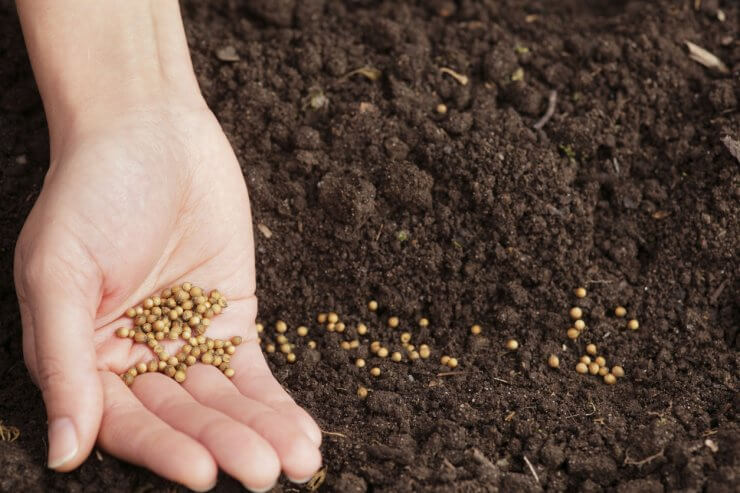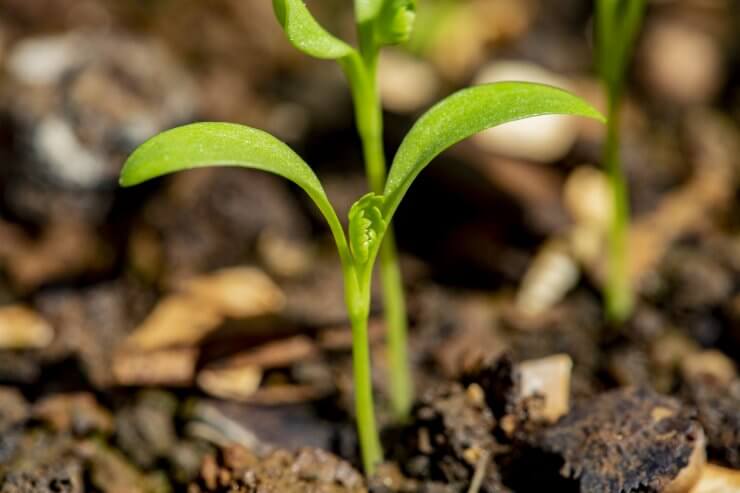
Gardener planting cilantro seeds in soil
You can easily grow cilantro from seeds, seedlings, or cuttings, indoors or out. Cilantro has a relatively brief lifecycle. It sprouts quickly in the cooler months, is ready to harvest in as little as 30 days, then bolts and flowers under the hot summer sun. The leaves die and you’re left with the seeds, called coriander, which is used as a spice. If leaf production and harvest are your goal, sow cilantro successively over three to four weeks and make sure your plants get some afternoon shade to slow bolting.
Though cilantro is considered an annual plant, meaning it grows for one year and dies, cilantro often reseeds itself. So, plant it in a location where there is room for dropped seeds to sprout the next year.
Seed Planting Process
You can collect seeds from a friend’s garden and plant them. Ideally, you should use seeds from an organic cilantro plant. You can also purchase seeds from a reliable seed source online or in a store. If the seeds are still in their husk, gently crush the husk to release the seeds—two in each husk. Soak the seeds for 24 to 48 hours and dry them before planting.
Because cilantro grows so quickly, most gardeners sow seeds directly into the soil soon after the last frost in the spring. Plant the seeds about 2 inches apart about a 1/4 inch under the soil. Space rows 12 inches apart. Keep the soil moist until the seeds sprout at least two leaves, then thin to 6 inches apart.
Cilantro develops a taproot, so it doesn’t like to be transplanted. However, if you want to get a jump on the planting season, start your seeds indoors in potting soil and small containers you can plant directly into the ground about two to three weeks before the last frost is expected. Keep the soil moist and expose the seedlings to sunlight or indoor plant lights once the seeds germinate. Transplant after the first frost, spacing 6 inches apart. Or transfer to a larger pot and place in a sunny window if you want to grow cilantro indoors.
Growing Seedlings

Cilantro Seedling
You can purchase seedlings and skip the whole germination process; but again, plan to wait until after the last frost before transplanting to your garden or an outdoor container. You’ll want to make sure your little seedling gets plenty of light and adequate water—just be careful to keep the soil from getting soggy.
Growing from Cuttings
If you already have cilantro and you’d like to have more, you can take a cutting from a healthy plant. Trim about a 7-inch section of branch that has at least 3 inches of stem. Remove any bottom leaves, leaving about three leaves at the top. Place the cuttings in a clean glass of water. Roots will form quickly, and you can transplant to the garden or a container in two to three weeks.
Have you tried growing cilantro from seeds, seedlings, or cuttings? Which method do you prefer—and why? Please share your experiences with us.


 Previous
Previous

